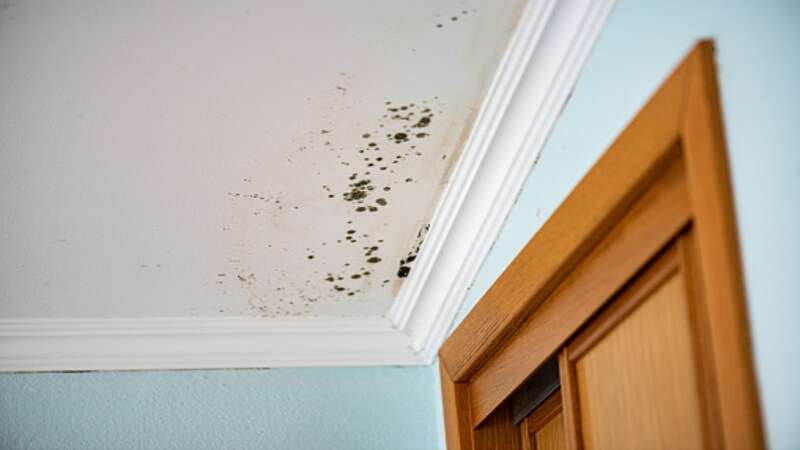If you’ve noticed any warning signs of mold toxicity, don’t ignore them.
Mold toxicity may be extraordinarily dangerous and adverse to your fitness and well-being, so it is essential to recognize the signs and symptoms and take action.
This blog submission will discuss the 10 warning signs of mold toxicity so you can be aware and take steps to guard yourself and your circle of relatives.
10 Warning signs of mold toxicity:
1. Respiratory Problems:
Mold toxicity can cause many fitness issues, mainly concerning the breathing system.
Unfortunately, many humans do not comprehend they are managing mold till they start experiencing the signs and symptoms.
Knowing the warning signs of mold toxicity is essential for quickly figuring out and addressing the problem.
2. Skin Irritation:
Mold toxicity can appear in several approaches, however, skin irritation is one of the most commonplace signs and symptoms.
If you have been exposed to mildew, it is critical to be aware of the signs and symptoms of pores and skin infection so that you can search for clinical attention if vital.
The maximum apparent symptom of mold-associated pores and skin inflammation is itching and burning.
The affected area might also turn out to be red and inflamed, and there can be small blisters or bumps on the surface.
In some instances, hives or other allergies might also seem. If you revel in those signs, it’s far critical to take clinical attention without delay.
Untreated mold toxicity can cause further headaches, along with respiratory trouble or even serious organ damage.
Your medical doctor can provide remedies to assist relieve your symptoms and decrease your chance of long-term health outcomes.
3. Fatigue:
When it comes to mold toxicity, fatigue is one of the warning signs of mold toxicity.
If you’re feeling strangely worn out, even once you have an amazing night time’s sleep, you’ll be experiencing the effects of mildew toxicity.
This sort of fatigue is more than just feeling a bit rundown; it may affect your energy degrees, temper, and capability to suppose without a doubt and awareness.
Fatigue due to mildew toxicity can accompany symptoms together with issues concentrating, complications, frame aches, mind fog, insomnia, dizziness, and even despair.
These symptoms make ordinary sports like work and exercising a great deal more tough.
If you’re experiencing any of these warning signs of mold toxicity, don’t forget about them!
A nice way to cope with the trouble is to identify the source of the mold and remove it from your private home or workplace.
You may additionally want to look for scientific interest if the symptoms grow to be excessive. You can start feeling better quickly and repair your fitness with the right steps.
4. Headaches:
Headaches are also one of the 10 warning signs of mold toxicity. Several studies have shown that chronic complications may be because of exposure to mold and its pollution, including mycotoxins.
Some studies suggest that the onset of headaches after mold exposure is not as unusual as previously idea. Headaches from mold toxicity can range from moderate to extreme.
Symptoms might also encompass throbbing, pulsing, or stress in the head, accompanied by using fatigue, irritability, and sensitivity to light.
If you’re experiencing any of those signs and symptoms, you need to see a doctor and get tested for mildew exposure.
While there may be no remedy for mildew toxicity, it is possible to control the signs and symptoms via way of life changes.
Making sure you’re getting lots of rest, consuming a wholesome weight loss program, heading off publicity to mold-contaminated areas, and taking steps to lessen indoor air pollution can all help to relieve your signs.
If you’ve been exposed to mildew, it is also crucial to seek professional assistance to develop a complete plan for managing your health.
5. Memory Problems:
Memory troubles also are one of the maximum commonly mentioned signs and symptoms concerning the ten warning signs of mold toxicity.
Memory issues can occur in numerous ways, from forgetting simple things to losing important memory.
Common signs and symptoms and symptoms related to memory issues consist of trouble concentrating, negative choice-making abilities, confusion, disorientation, and problems recalling current occasions.
If you’re experiencing any of those issues, it is able to imply that mold is present in your own home or office space and may make you ill.
It’s vital to perceive and remediate any mold troubles in your surroundings, as it could have critical fitness effects if left unchecked.
If you observe that you have a mold problem, ensure an inspection by way of a licensed expert.
They can discover any capacity issues and advocate the necessary steps to cope with the problem.
6. Sinus Infections:
Sinus infections may be one of the most commonplace signs and symptoms of mold toxicity.
Mold spores can travel through the air and irritate the sinuses and airways, resulting in a sinus infection.
The symptoms associated with a sinus infection can range from minor soreness to extreme contamination.
Common signs and symptoms encompass facial strain or pain, stuffy nose, headache, sore throat, coughing, congestion, fatigue, and bad breath.
In a few instances, mildew toxins within the air could make it hard for the body to fight off infections, resulting in sinus infections that do not go away with conventional remedies.
If you are experiencing any of those signs and suspect you may have sinus contamination because of mold toxicity, it’s critical to look for medical interest proper away.
Your physician can diagnose the purpose of your contamination and advocate the right treatment.
7. Depression:
Mold toxicity can critically impact your intellectual health, and despair is one of the maximum commonplace symptoms of the ten warning signs of mold toxicity.
If you’re experiencing any of the subsequent caution signs and symptoms, it can be an indication that you’re stricken by mold toxicity:
- A feeling of hopelessness and helplessness.
- Lack of motivation or energy to do regular activities.
- Persistent sadness and vacancy.
- Loss of interest in sports you used to experience.
- Feeling crushed and unable to address regular tasks.
- Feeling remoted and disconnected from others.
- Difficulty concentrating or remembering things.
- Insomnia or problem drowsing.
- Changes in urge for food (both increase or lower).
- Recurring thoughts of demise or suicide.
If you’re experiencing any of these signs and symptoms, it’s essential to try to find help properly.
Talk to your physician about trying out for mold toxicity and get professional help if wanted.
It’s essential to keep in mind that there’s help available and that depression may be dealt with successfully with the right care and aid.
8. Anxiety:
Anxiety is a common symptom of the 10 warning signs of mold toxicity. Many human beings are unaware that their anxiety can be caused by the publicity of mold or, even worse, the toxins it produces.
It’s critical to be privy to the signs and symptoms of mildew toxicity so that you can take the essential steps to protect your fitness.
People with mold toxicity can enjoy persistent and debilitating fear, fear, and unease, that may intrude with everyday activities.
They can also have bodily signs and symptoms together with a speedy heartbeat, excessive sweating, nausea, dizziness, and problem respiratory.
If you are experiencing those signs and symptoms, it’s vital to search for help from a clinical expert to make sure that your tension is not due to mold.
9. Nausea:
Nausea is one of the 10 warning signs of mold toxicity It can encompass trendy nausea and extra extreme signs inclusive of vomiting and stomach cramping.
It can arise even supposing there is no visible mold increase, but it is important to investigate similarly in case you are experiencing any of those signs and symptoms.
The reasons for nausea because of mildew toxicity vary, however a number of the maximum not unusual assets are breathing in toxic mold spores and consuming infected meals or water.
If you suspect you’ve been exposed to mold, it is crucial to try to find scientific interest immediately.
10. Immune System Problems:
Mold toxicity will have extreme effects on your health. Recognizing the caution signs of mildew toxicity is vital, as ignoring them can lead to severe clinical complications.
One of the number one methods that mold toxicity can appear itself is through problems with your immune machine. If you are experiencing any of the above 10 warning signs of mold toxicity, it’s important to see your medical doctor right now.











1 comment